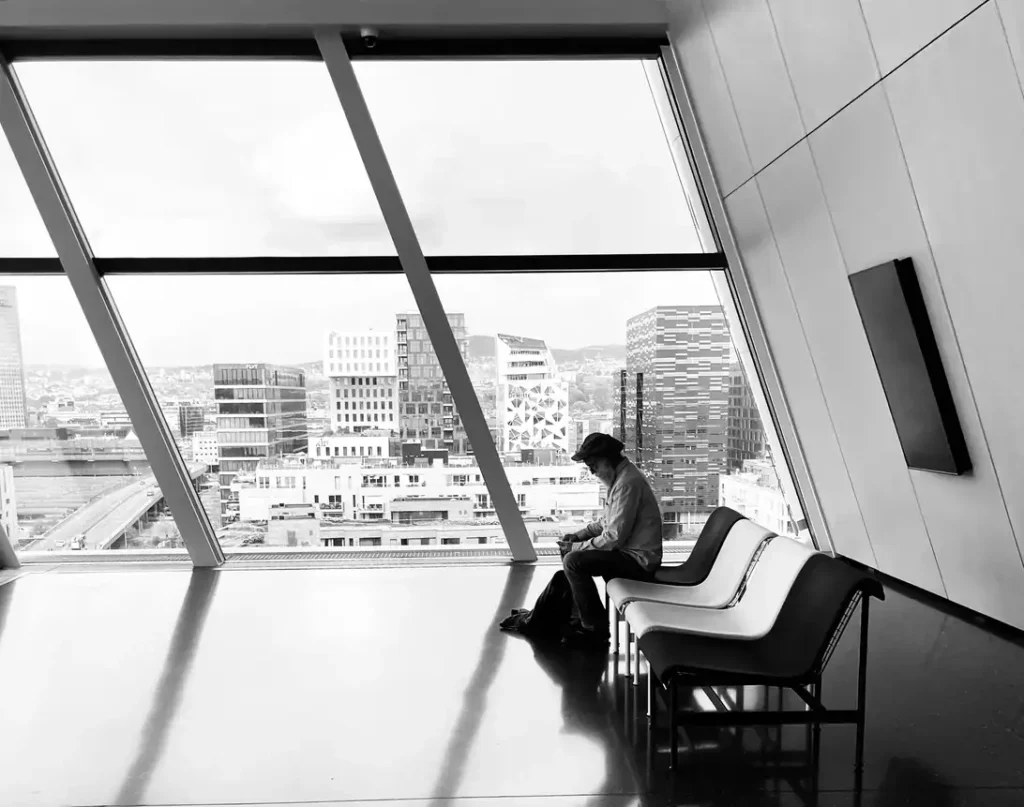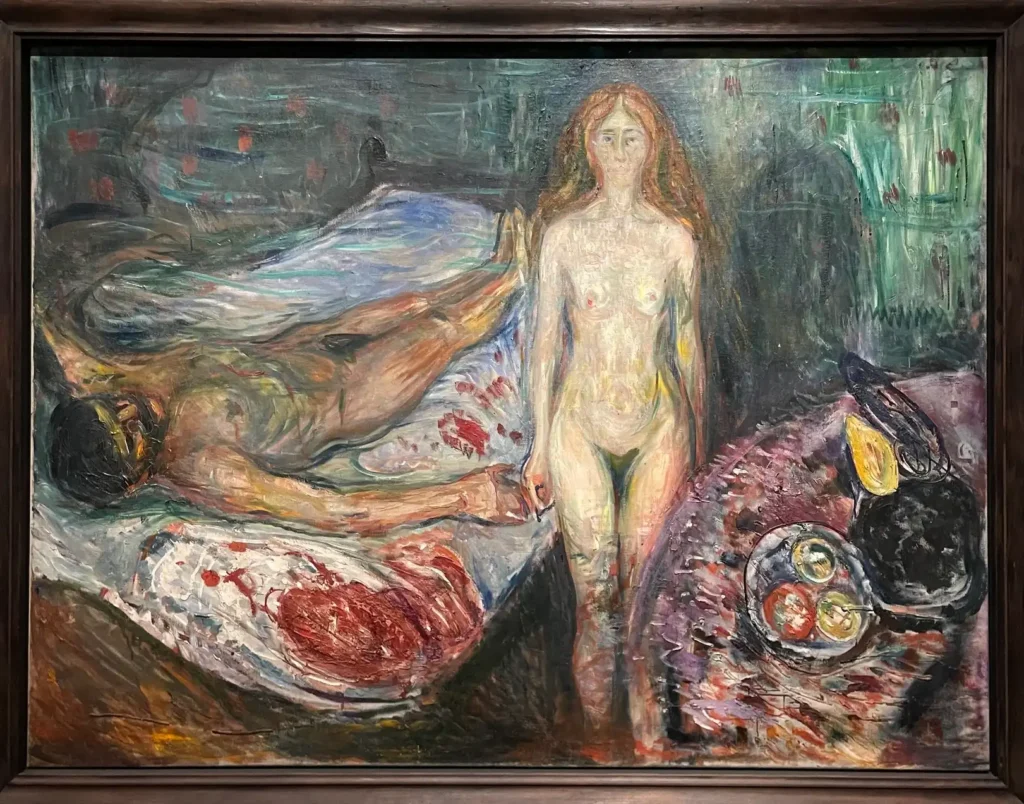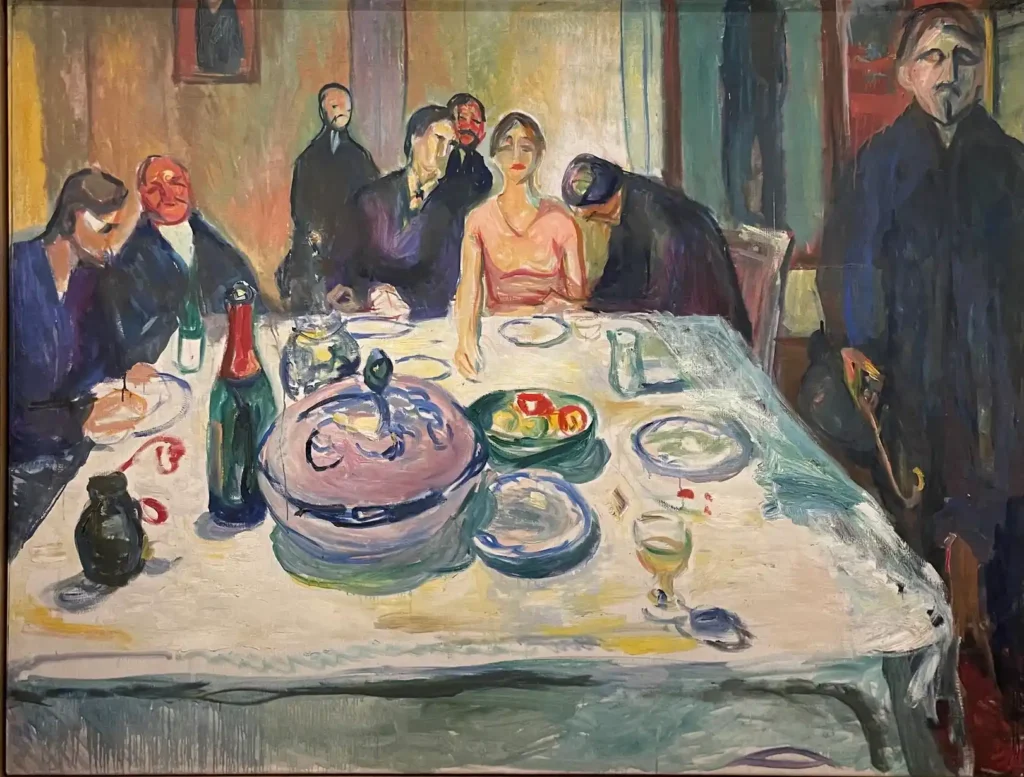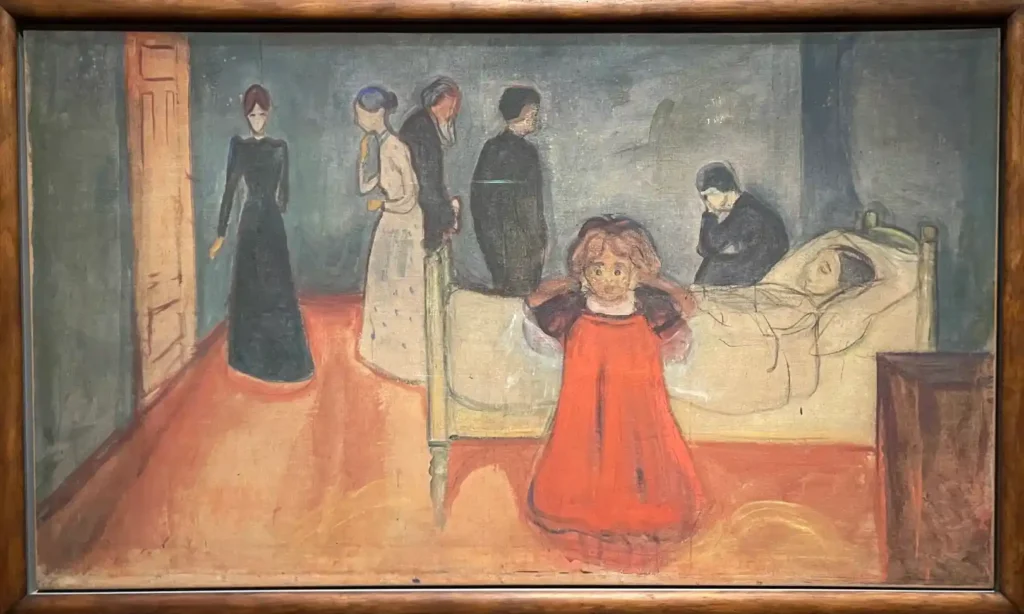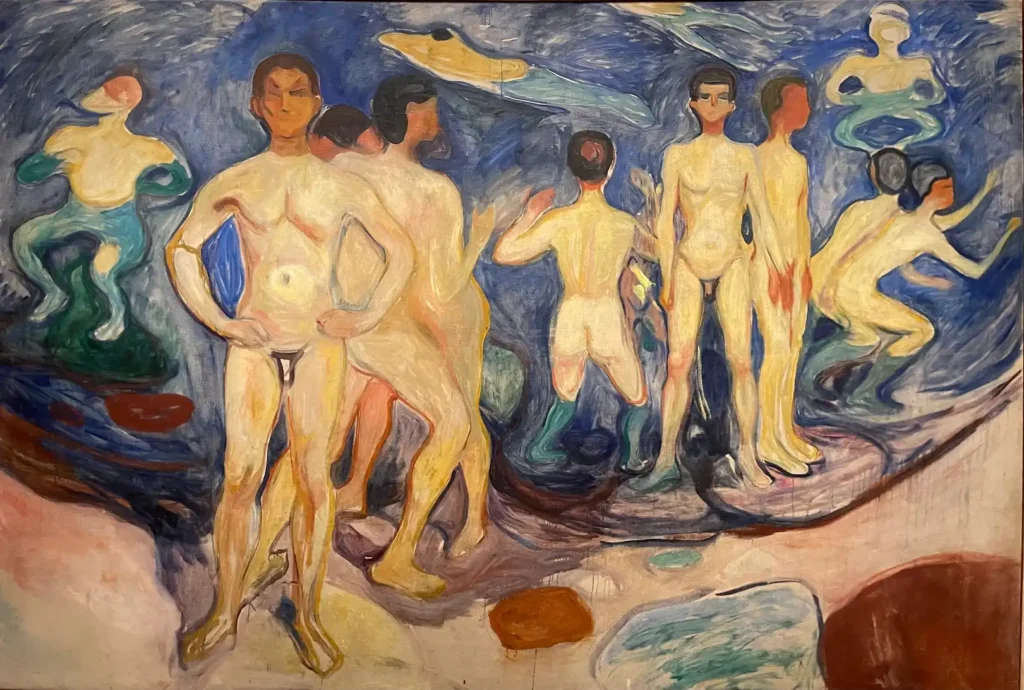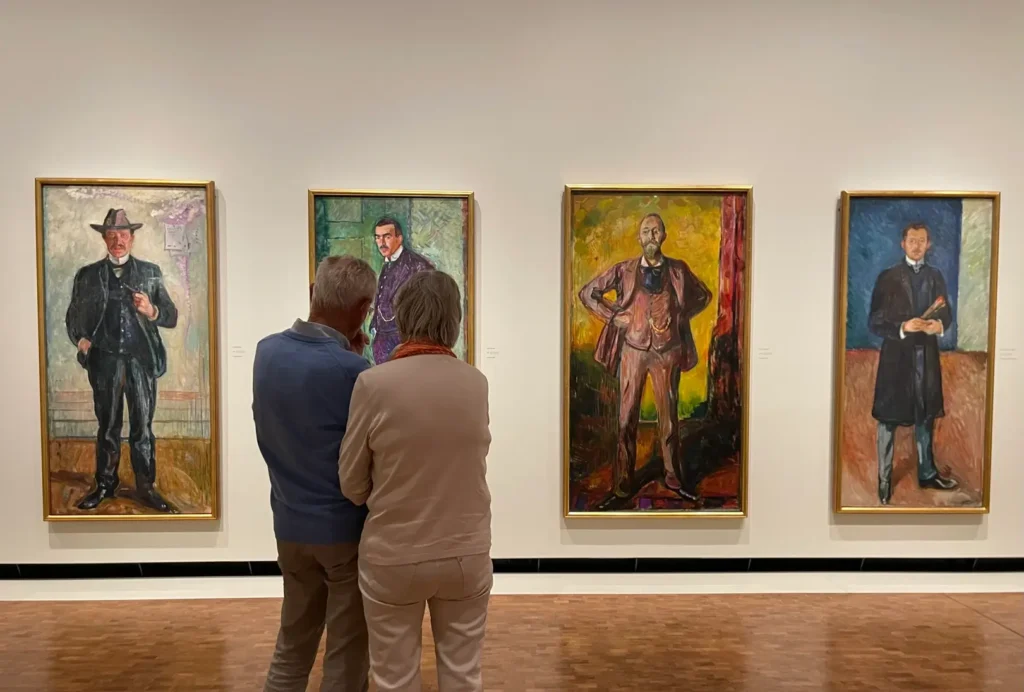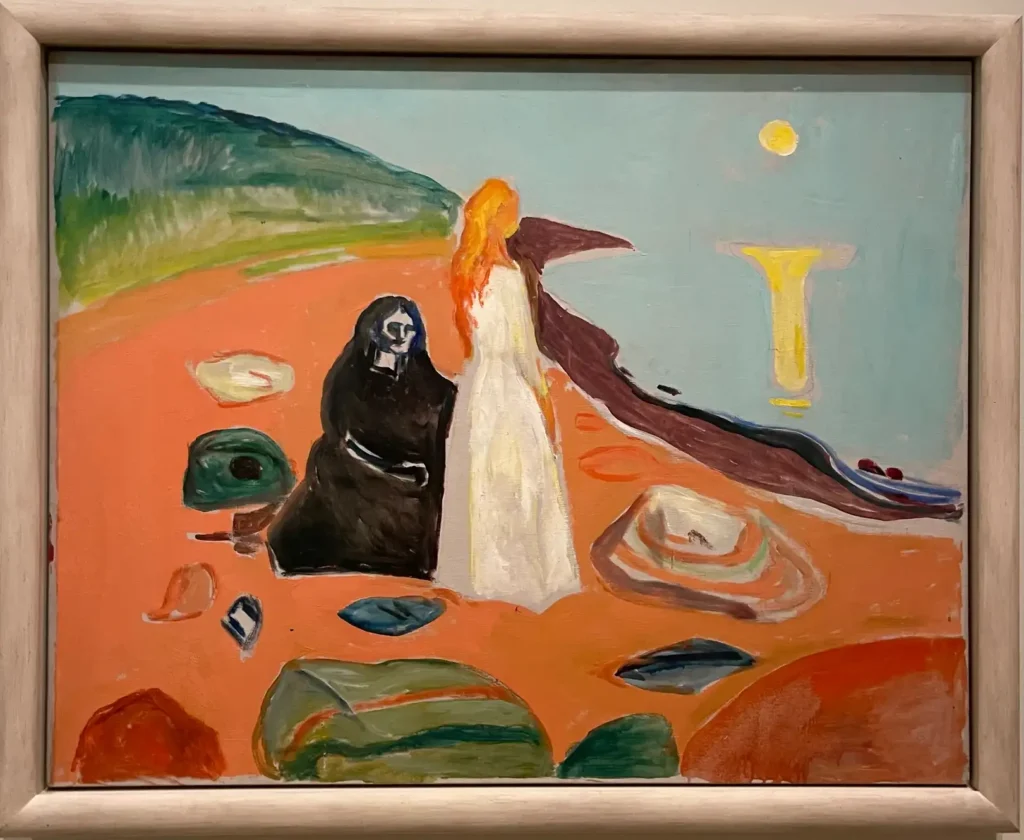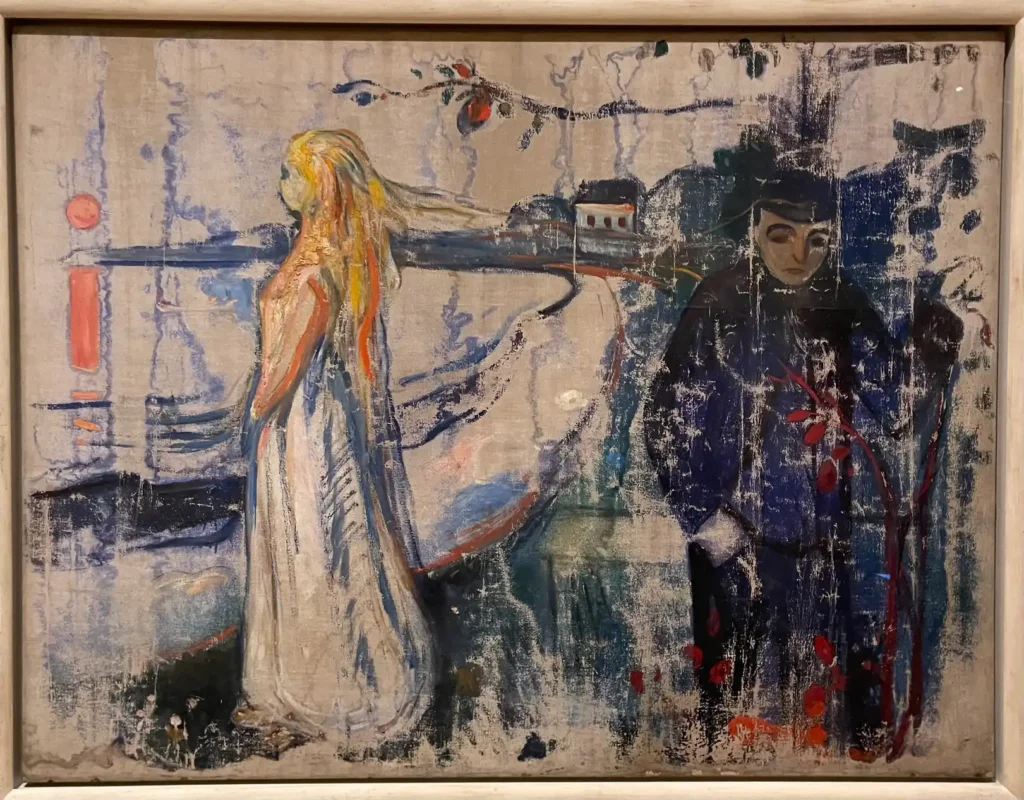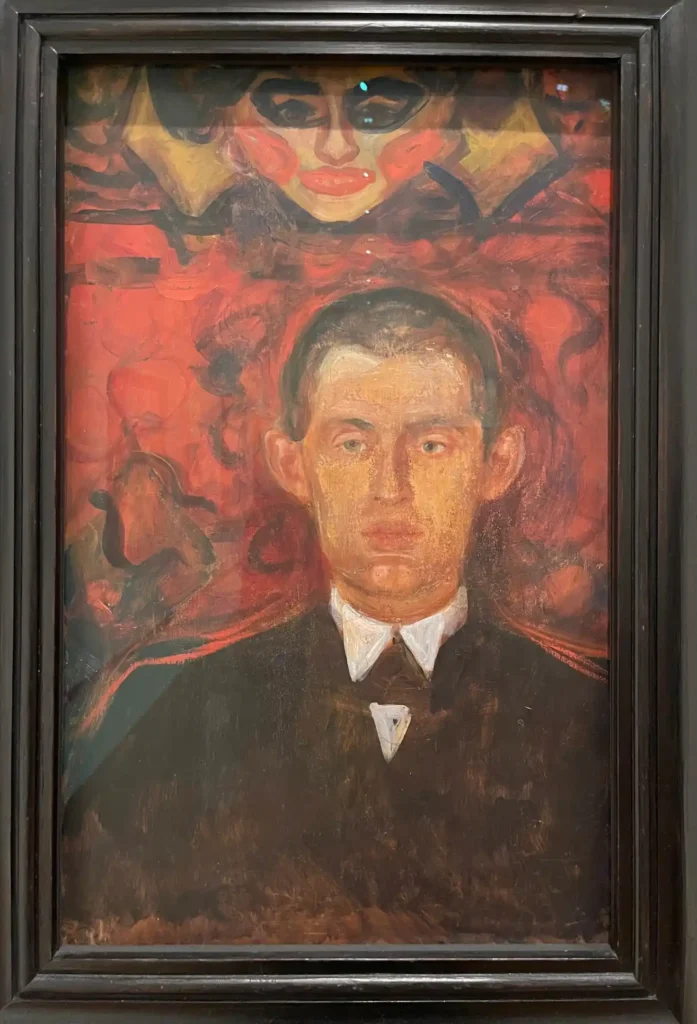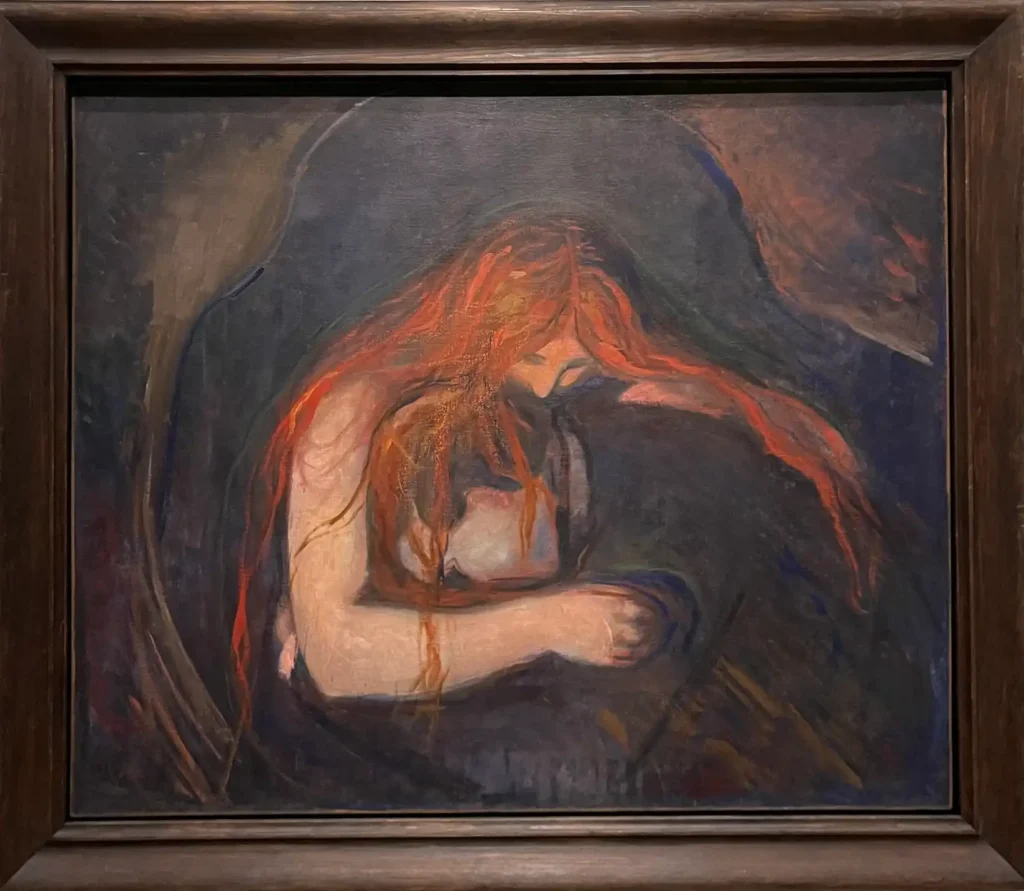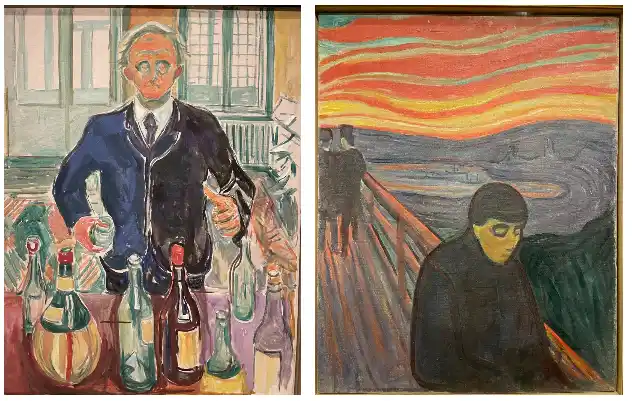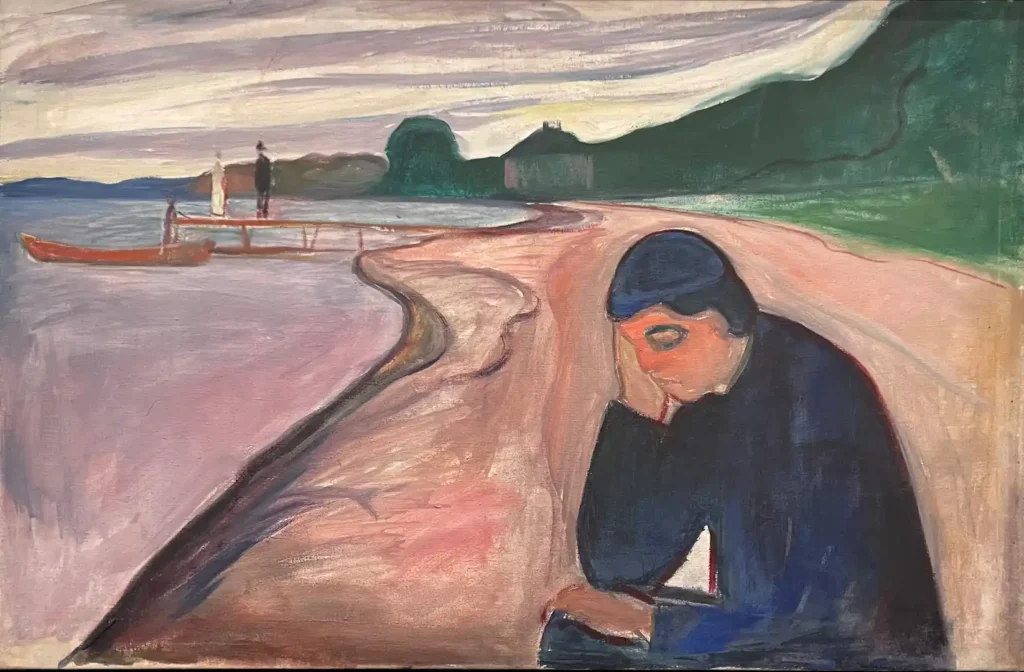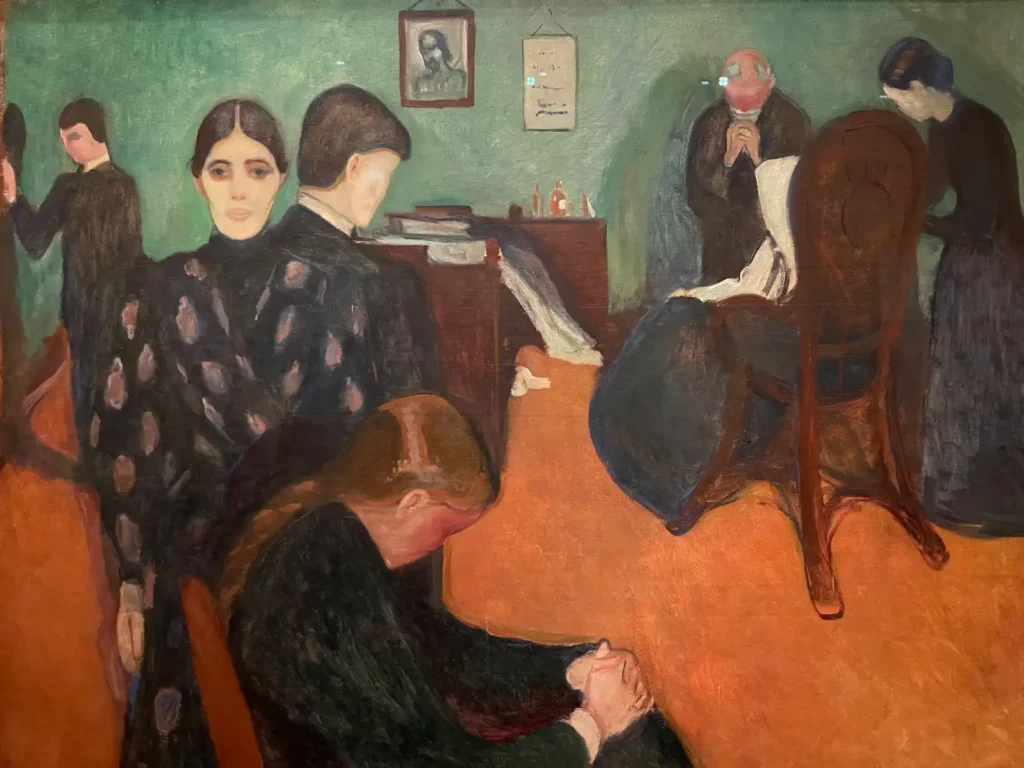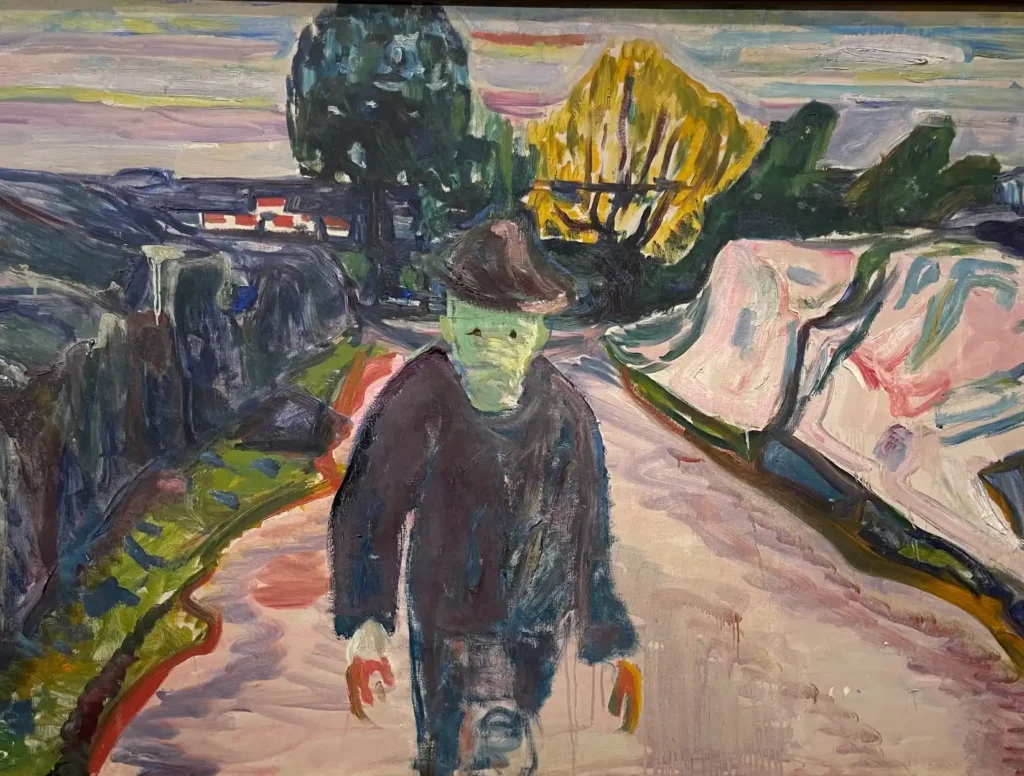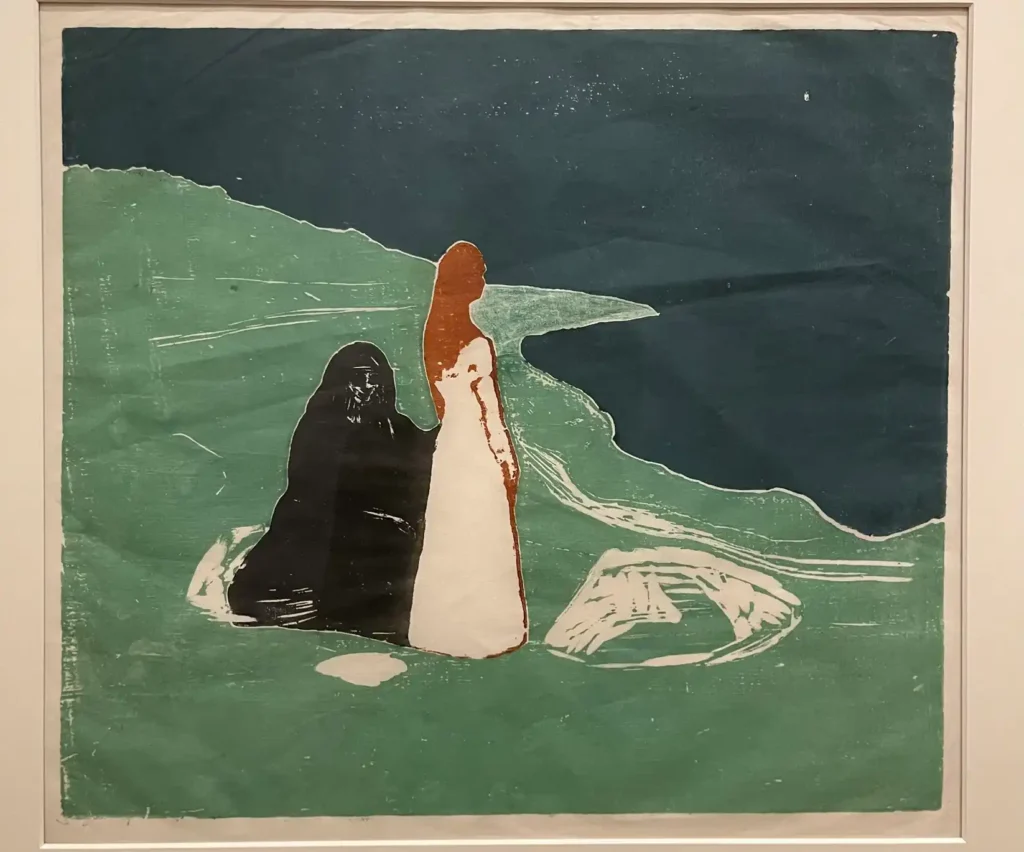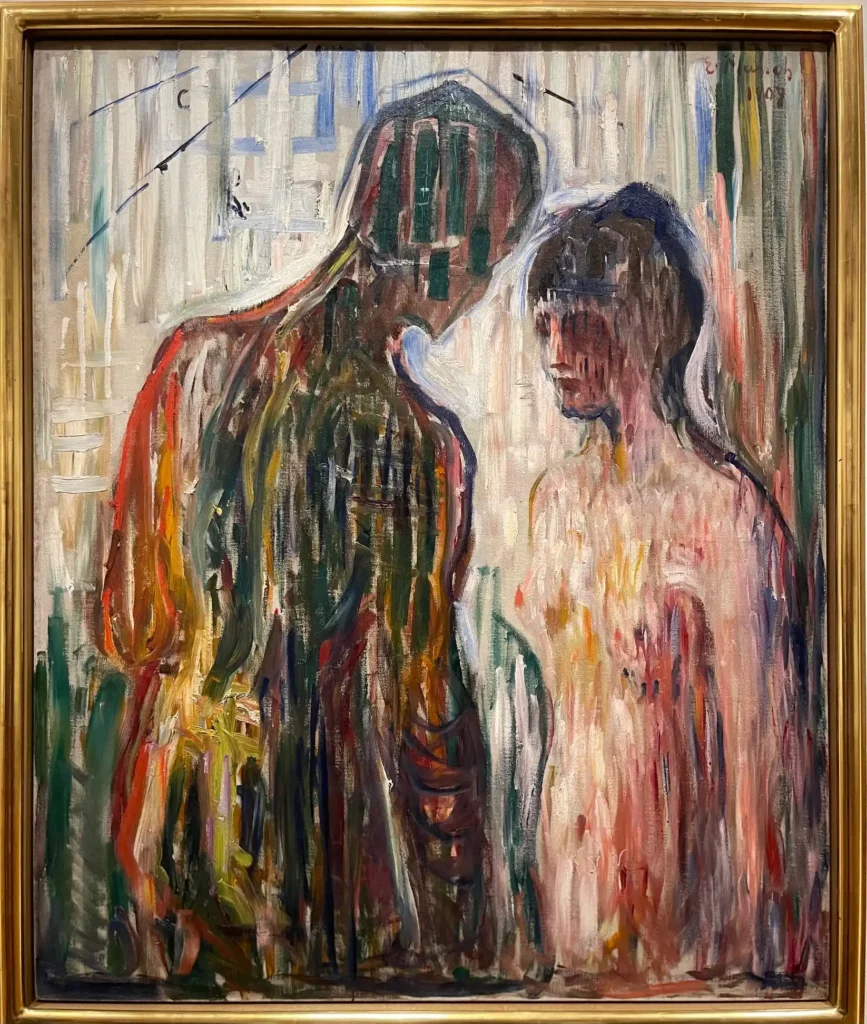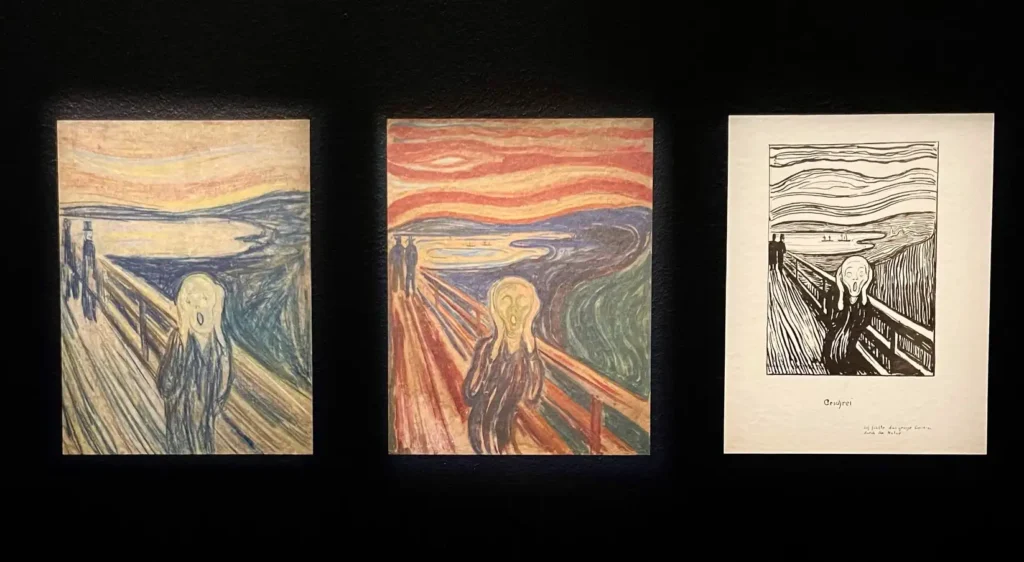Located in the heart of Oslo, Norway, the Munch Museum stands as a testament to the artistic brilliance of Edvard Munch, one of the most influential painters in the history of modern art.
The Munch Museum’s building itself is a work of art. Designed by renowned Spanish architect Juan Herreros, the Munch Museum’s new building opened its doors to the public in 2021. The distinctive facade, inspired by Munch’s brushstrokes and the play of light on water. The new museum provides ample space to showcase Munch’s vast collection and offers panoramic views of Oslo’s skyline from its rooftop terrace.
23
The museum houses the biggest collection of Edvard Munch’s artworks, including paintings, drawings, sculptures, and graphic prints. This is a great journey through Munch’s artistic evolution and the transformation of his style over time.
The exhibition is divided into twelve different themes that you can experience in any order you like: Alone, To Die, The Scream, Love, Gender, Outdoors, Naked, Others, Oneself, In Motion, On the Surface and Variations. The twelve themes capture the emotional aspects of Munch’s art, the types of motifs he worked with and his innovative exploration of different artistic media. There is no right or wrong route through the exhibition – the visitor have a freedom to find ‘their’ Munch.
Munch perceived love to be full of contrasts. He described it as a fight between two people: where passion goes hand in hand with pain and desire with loss.
Munch shows us that there are many ways to be alone. In his paintings we encounter the gloom of loneliness, which is reinforced by other people.For Munch, creating art was inherently linked to being alone.
The wedding of the bohemian
One of the tragic facts of Munch’s biography was the loss of his mother and sister as a child. Munch’s pictures revolve not only around the people who die, but those left behind. Death is deeply personal and can also be experienced through the eyes of a child.
In Munch’s art, we find a variety of naked bodies. Some become shy and vulnerable and would prefer to cover up. Others feel strong and liberated. The bodies we encounter in Munch’s motifs are real. They often belong to men and women who posed for him. For Munch the body was interesting just as it was – not as an ideal, but as something in a state of perpetual transformation. Sometimes, he paints the body in motion, quivering with anticipation, anguish or pleasure. What the body holds is more important than how it looks.
Munch painted many portraits over the course of his career. He sometimes did this to earn money, but it was mainly because he wanted to. He painted family, friends, children and famous people in society.For him, a portrait was not a precise image, but a work of art with which he wanted to convey something interesting about the person he was painting.
Throughout his entire artistic career, Munch returns to the same themes in order to explore them anew.He makes one version, then another, and then another again. By approaching the motif in different ways, he continually uncovers new sides to it. Sometimes, he paints it in several versions, as we see here.
There are three versions of The Scream in Munch Museum – a painting, a drawing, and a print. Munch created all versions of The Scream on cardboard or paper, making them more fragile than oil paintings on canvas. In addition to climatic factors such as temperature, humidity and oxygen levels, light exposure must be limited. Light affects the colour pigments in the pictures and breaks down paper and cardboard over time. In recent years, the museum has conducted several research projects to establish how much light the various versions of The Scream can withstand each day. None of them can be exhibited all the time so the pictures in this room are displayed on rotation.
Self-portrait with bottles
For Munch, movement always involves emotion. He wants to create a work of art that captures us, that is intense and dramatic. When he paints, it must move the person who sees it.
